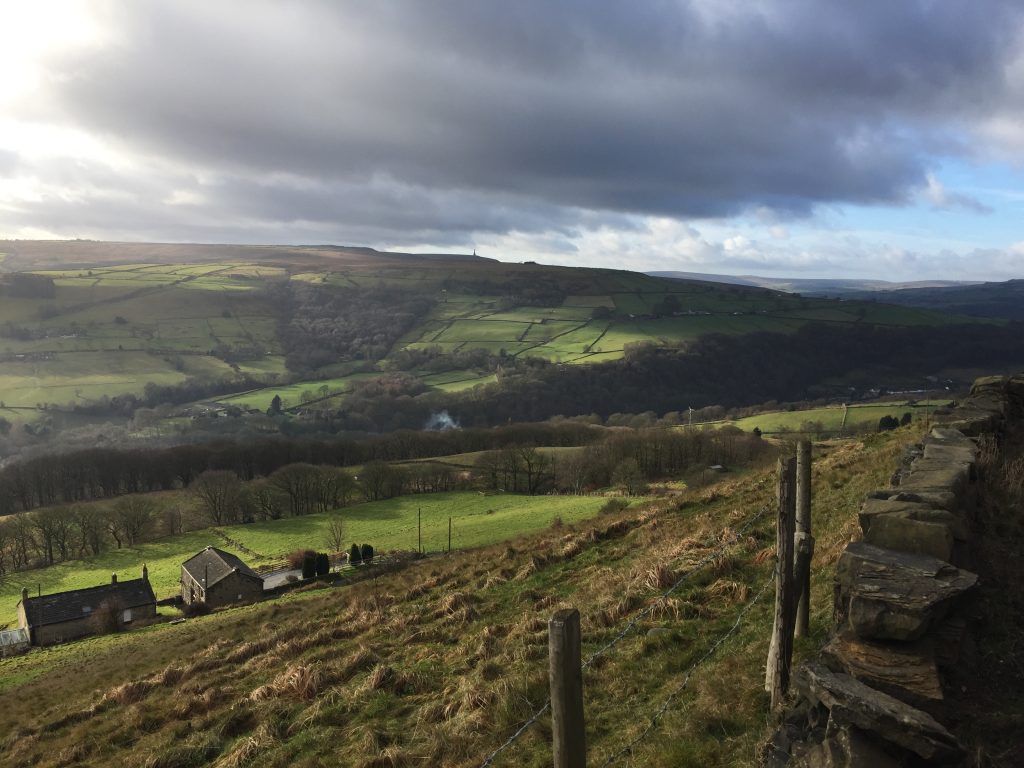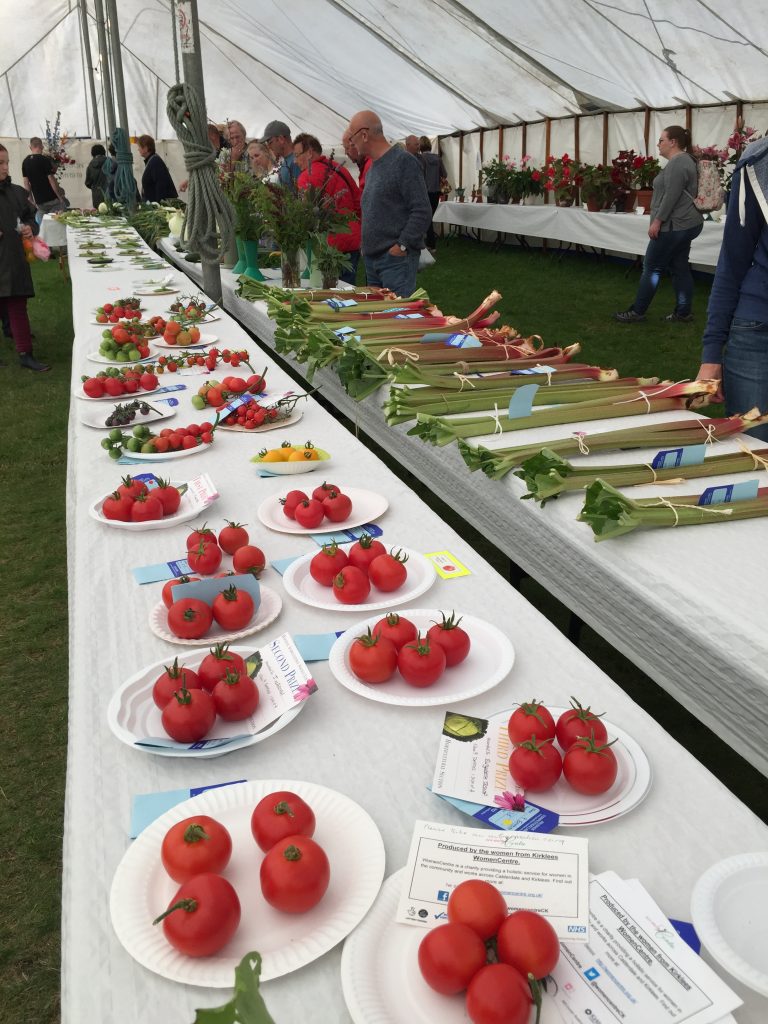Ada’s grandfather, James Townsend had been a wood turner and shuttle maker in the 1840s and 50s, so surely it was no coincidence that her husband-to-be Edgar Harwood was a shuttle tip maker. The tips of the wooden shuttles were made from forged steel and were then fitted on the wooden shuttles to prevent the wearing down of the wood and causing them to snag on the yarn. The steel tips then had to be smoothed on a rotating grindstone to iron out any tiny imperfections that would prevent the shuttle from flying through the yarns from one side of the loom to the other. I own a shuttle that I bought many years ago and it wasn’t until I learned about Edgar’s occupation that I looked closer at my shuttle and noticed the two metal shuttle tips, almost bullet-like at their point.
Edgar’s family had been whitesmiths for several generations dating back to his great great grandfather John, 44 born in 1730, making Edgar a fifth generation whitesmith. The Harwoods had all lived and worked on the appropriately named Heights Road which runs almost at the top of the Midgley Moor on the North side of the Calder Valley. At a dizzying 1000ft above the valley this road is the home of spectacular views of latticed farmland with seams of dry stone walls, some well maintained and in current use while others stand neglected and ruined but still speak of the hands that placed stone upon stone centuries ago.

“If I pay the roots of the heather
Too close attention, they will invite me
To whiten my bones among them”
( from Sylvia Plath’s poem Wuthering Heights)
Houses are scattered along the road and when I first explored this area I was amused by a building named Rough Bottom and it wasn’t until I began to research my family connections to this windswept moor that I discovered that Rough Bottom had once housed the Harwood family, and the attached building that projects from the Western end was the whitesmith’s smithy.

The land behind the building is open moorland, ‘Rough’ to distinguish it from the managed farm fields, and above the building is Rough Top farm.

The next group of buildings span Foster Clough, a fast moving stream. Foster Clough was home of the Harwoods until Edgar’s father moved into the centre of Midgley village, opening a grocer’s shop after his marriage in 1847. It was at that time that he established James Harwood and Sons, whitesmiths.

By 1861 he was living in Stocks House, a beautiful roadside cottage with his nine siblings until the family moved down into Hebden Bridge, part of the migration to the valley bottoms for the faster mills and by 1871 they were living on my street, Crown Street. In 1891 they were at 11 Crown Street and along with his brothers they have specialized their whitesmithing business and are now registered as shuttle tongue and tip makers. The tongue is that part of the shuttled that is hinged like a pocket-knife, so that it projects out from the mortise when inserting a fresh cop of yarn. Meanwhile Edgar’s shuttle tip business continued to flourish. His father built Malvern House on Crown Street, across the street from me which now houses Boots chemist.

In 1892 it moved to larger premises close to Foster Mill retaining the name Crown Street Works. There were 35 employees and they exported to many parts of the world. As many of the successful manufacturers Edgar played a prominent role in the Hebden Bridge community. He headed up the masonic lodge was the worshipful master and was a leading member of the liberal association. He was a member of Birchcliffe choir and was a deacon the chapel for six years, the beautifully preserved building where he married Ada, just across the road from their marital home at Hurst Dene. He served on the Hebden Bridge council for eleven years becoming the chairperson, an office which his father had held before him, being termed “mayor” in the local newspaper. During the first world war he sat on the military tribunal and in 1923 he swore the Oath of Allegiance as a Justice of the Peace in Todmorden Town Hall. But there was time for relaxation too in Edgar’s busy life. Judging from the prizes he won in the Hebden Bridge Horticultural shows over several years Edgar was a keen gardener, his fine aspidistra and plate of tomatoes gaining him two first places.

In the summer of 1922 Edgar and his second wife took a cruise from Liverpool to New York on the Laconia, a ship that would be sunk after a torpedo attack by a German U-boat in 1942 with a loss of over 1800 lives of soldiers and prisoners.
In 1927 Edgar was killed at work when a grindstone burst at the Crown Street works. His brother James who worked there was the first on the scene of the accident. Edgar had been grinding peg points on a large sandstone grindstone. There was no fencing around the rotating stone because the men had to have easy access to it. Apparently Edgar had fitted a new pulley to make the grindstone rotate quicker just a minute before the accident when a large crack was heard. An eye witness related: “Mr Harwood was lying on the ground. He had been killed instantaneously, part of his skull was blown away and part of his right hand.” An inquest revealed that the grindstone had been operating at 75% above a safe working speed but nevertheless a verdict of accidental death was returned by the jury. The funeral service at Birchcliffe Chapel was conducted by the Rev A. Windsor who had been a close friend of the Harwoods. Indeed he proffered that ‘nobody else knew him better. ‘ He described Edgar as ‘an unpolished diamond’ ‘There was a mixture of strength and tenderness in him.’ The shock had been so intense for his wife, that she was unable to attend the funeral though the list of mourners and floral tributes took up an entire column in the newspaper.
One grim February afternoon with snow still clinging to the roads and a heavy cloud of fog obscuring even the closest hills I came across a photograph of the former Crown Street Works online taken ten years ago. It’s entitled ‘Former Crown Street Iron Works, Spring Grove, Hebden Bridge,’ and it was with a jolt that I realized that I knew the place. The skeleton of this large building had attracted me since moving to the town and I found several photos of it that I’ve taken of it over the past few years.

Something about it had intrigued me. It’s on a small piece of derelict land, roofless and for the past year has had a ruined car with smashed windscreen and flat tyres just outside one of the doors. The wide double door at the side was usually firmly closed and locked, presumably to prevent people wandering in and coming to some harm but one day the doors were open and I was able to see inside. There’s not much of interest, just piles of odd pallets and boxes Adjoining the building are the derelict stables which are currently for sale. Last year I had even made a piece of fabric art from the photograph I took of the stables. As I took a closer look at the stables a man emerged from a house opposite. He owns the stables which once served Foster Mill and he showed me photos of the cottages that once stood on the site of the modern houses which now form Spring Grove. My thoughts when I pass this place in future will now be filled with Edgar’s ghost wandering in this ruin while his wife’s ghost floats above Blakedean Bridge.
Leave a Reply